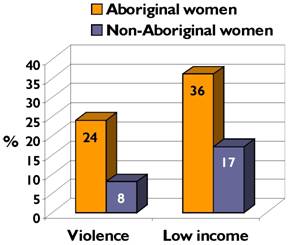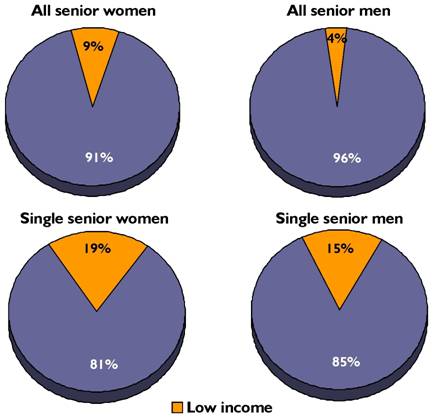Common menu bar links
Breadcrumb Trail
ARCHIVED - Status of Women Canada
 This page has been archived.
This page has been archived.
Archived Content
Information identified as archived on the Web is for reference, research or recordkeeping purposes. It has not been altered or updated after the date of archiving. Web pages that are archived on the Web are not subject to the Government of Canada Web Standards. As per the Communications Policy of the Government of Canada, you can request alternate formats on the "Contact Us" page.
Section I – Overview
Minister's Message

As Minister of Canadian Heritage, Status of Women, and Official Languages, I am pleased to present the Status of Women Canada Departmental Performance Report for 2006–2007. The report outlines all that this Canadian Heritage Portfolio Department has accomplished over the reporting period and the many ways in which it continues to fulfill its mandate.
In 2006–2007, Status of Women Canada transformed itself to more directly help women, their families, and their communities. The introduction of two new funding components to the Women's Program–the Women's Community Fund and the Women's Partnership Fund–has increased opportunities for the Department to facilitate women's participation in society. And, the $10 million added to Status of Women Canada's budget in March 2007 will make it the organization's largest total budget ever.
This Departmental Performance Report demonstrates the unique and important role that Status of Women Canada plays in ensuring that all Canadians can participate in the life of our society and reach their full potential.
The Honourable Jos�e Verner, P.C., M.P.
Management Representation Statement
I submit for tabling in Parliament the 2006–2007 Departmental Performance Report (DPR) for Status of Women Canada.
This document has been prepared based on the reporting principles contained in the Guide for the Preparation of Part III of the 2006–2007 Estimates: Reports on Plans and Priorities and Departmental Performance Reports:
- It adheres to the specific reporting requirements outlined in the guidelines provided by the Treasury Board Secretariat.
- It is based on the Department's Strategic Outcome and Program Activity Architecture that were approved by Treasury Board.
- It presents consistent, comprehensive, balanced, and reliable information.
- It provides a basis of accountability for the results achieved with the resources and authorities entrusted to it.
It reports finances based on approved numbers from the Estimates and the Public Accounts of Canada.
As this report highlights results which were delivered by many people who no longer work at SWC following the efficiency savings required from the Department, I would also like to offer our most sincere appreciation to them in recognition for their hard work and dedication.

_____________________________________________
Clare Beckton, Co-ordinator
Summary Information
|
For Status of Women Canada (SWC), 2006–2007 was a year of significant change and activity–a period during which the Department set the stage for its new direction, modernized and streamlined its operations, and developed new funding components to the Women's Program. SWC remains committed to its 1976 mandate to "coordinate policy with respect to the status of women and administer related programs," and its vision for "the full participation of women in the economic, social and cultural life of Canada" remains strong. This performance report highlights the results achieved by SWC during 2006–2007:
A governance review in the summer of 2006 resulted in a more cohesive management structure. This was followed by the Government of Canada's efficiency savings announcement of $5 million, which led to streamlining within the Department. SWC began making the organization more responsive to new challenges, more accountable to Canadians, and better prepared to make a direct impact on the day-to-day lives of Canadian women. Given the significant changes to SWC's budget as of April 1, 2007, the Department spent the second half of the year addressing critical structural and procedural issues while reducing the level of human resources in the context of Workforce Adjustments, refocussing the organization and delivering on its mandate. In March 2007, the Women's Program was redesigned to offer two new components: the Women's Community Fund and the Women's Partnership Fund, thus enabling the Women's Program to widen its reach. A number of key changes to the administration of the Women's Program have substantially reduced overhead and delivery costs, thus addressing key recommendations from the independent evaluation of the Women's Program carried out in 2005. Budget 2007 provided SWC with $20 million over two years, much of which will fund projects that directly benefit women in their communities. Results will be reported in SWC's 2007–2008 performance report. During the year, SWC also focused on supporting other federal government departments in their efforts to apply gender-based analysis. This was accomplished by working closely with the central agencies to incorporate gender considerations into existing government accountability mechanisms. |
Financial resources ($ millions)
|
Planned spending |
Total authorities |
Actual spending |
|
24.8 |
25.2 |
24.0 |
Human resources (FTEs)
|
Planned |
Actual |
Difference |
|
131 |
93 |
38 |
Departmental results for the strategic outcome ($ millions)
|
Strategic outcome: |
||||
|
Gender equality and the full participation of women in the economic, social, cultural and political life of Canada |
||||
|
Alignment with Government of Canada outcomes: |
||||
|
Both program activities support two outcomes: Promote equitable public policy and Build knowledge and organizational capacity on gender equality, which are aligned with: Diverse society that promotes linguistic duality and social inclusion and Income security and employment for Canadians. |
||||
|
|
||||
|
|
2006–2007 |
|||
|
Program priority |
Program activity |
Performance status |
Planned spending a |
Actual spending |
|
Priority 1: Implementation of gender equality approach |
1. Promote equitable public policy Expected result: |
Successfully met |
2.0 |
1.8 |
|
2. Build knowledge and organizational capacity on gender equality Expected result: |
Successfully met |
7.6 |
10.6 |
|
|
Priority 2: Implementation of modern management / governance |
All program activities |
Successfully met |
0.4 |
0.2 b |
a Of the total planned spending (net of $12 million in grants and contributions), 75% was estimated to each priority presented by program activity.
b The efficiency savings were not foreseen by SWC management; hence, the original resources were redirected toward implementing Workforce Adjustment procedures and the new departmental direction.
The Context
This performance report highlights the context in which Status of Women Canada (SWC) carried out its mandate in 2006–2007. Over the year, SWC continued to work across the Government of Canada, and with other levels of government, civil society, and international partners, to develop and implement strategies to facilitate the full participation of women in the economic, social, and cultural life of the country. In 2006–2007, SWC continued to pursue activities that support women's full participation and to implement its internal modern management/governance agenda.
SWC's key policy priorities, as identified in the 2006–2007 Report on Plans and Priorities (RPP), were increased accountabilities for federal departments and agencies on women's issues, economic security, the situation of Aboriginal women, and violence against women, which contributed to two Government of Canada outcomes–specifically, Economic security and employment for Canadians and A diverse society that promotes linguistic duality and social inclusion. To this end, SWC:
- refocused the Women's Program (WP) by streamlining its funding support and resources to ensure direct effects on women's lives, in line with SWC priority areas; and
- continued to work with the central agencies to ensure the accountability and sustainability of commitments to gender-based analysis (GBA).
SWC's Working Environment
Despite significant gains in women's participation in the economic, social and cultural life of Canada, challenges persist, particularly for certain disadvantaged populations of women.
- Overall, Canadian women continue to earn only 71 cents for every dollar earned by Canadian men. In addition, women in general are more likely to experience violence and assault: 1 in 3 girls are sexually assaulted before the age of 18 years.
- Aboriginal women face higher rates of violence and poverty than other Canadians. In 2004, 24% of Aboriginal women (compared to 8% of non-Aboriginal women) experienced spousal violence. Aboriginal women are also more than twice as likely to be living on a low income: 36% versus 17% for non-Aboriginal women (and 32% for Aboriginal men).

- Despite the overall decrease in poverty among senior women, the incidence of low income among senior women is still twice that among senior men (9% of women versus 4% of men). Of single senior women, 19% (as compared with 15% of single senior men) live in low-income situations.

- Recent government statistics indicate that although immigrant women are generally well educated, they are more likely to be unemployed than their Canadian-born counterparts: 70% as compared with 64%. Not surprisingly, this translates into lower incomes: 23% of all foreign-born women live in poverty, as compared with 16% of Canadian-born women.
During the period 2006–2007, there were a number of key influences on SWC's policy environment. In September 2006, the Government response to the Standing Committee on the SWC report, Gender-based Analysis: Building Blocks for Success, was tabled. The Government's response focused on the importance of increasing accountability and on working with the central agencies to build on activities undertaken by SWC in previous years.
Changes also resulted from the internal governance review and the shift to a new direction for the Department. With the introduction of the Deputy Coordinator role, with responsibility for departmental operations, the organizational management structure of SWC was streamlined and consolidated. In addition, with the amalgamation of the former Policy, Gender-Based Analysis, and Research directorates, SWC's core work of providing policy advice focused on supporting departments and central agencies in the application of GBA. Under this new direction, the Department was committed to carrying out trend and gap analysis on gender issues and GBA; providing impact analyses for policy and program activities; developing partnerships to assist departments in integrating GBA into the design and implementation of key initiatives; and supporting the central agencies in their monitoring and reporting on progress related to the full participation of women in the economic, social and cultural life of the country.
Also in September 2006, an efficiency review identified $5 million in administrative savings through the streamlining and consolidation of SWC's operations. The consolidation was aimed at enhancing SWC's policies, processes and practices for funding programs and for policy advice, to achieve greater accountability and effectiveness. To meet the $5 million target, regional points of service for the WP were reduced from 16 to 4, and SWC's human resources were reduced from 131 full-time equivalents (FTEs) to 70 FTEs effective April 1, 2007. The streamlining exercise also resulted in the elimination of the Policy Research Fund. In addition, in March 2007, the Government of Canada announced $5 million in new funding for the WP for 2007–2008. Budget 2007 announced a further $5 million in new financial resources for the Department to deliver more concrete results to women. The terms and conditions of the WP were subsequently modified to create two new components: the Women's Community Fund and the Women's Partnership Fund. The Women's Community Fund is a grant and contribution fund of $12.3 million for eligible recipients to carry out projects at a local, regional, and national level. The Women's Partnership Fund is a contribution funding of $3 million for collaborative projects that involve partners such as public institutions and non-governmental organizations (see Program Activity 2 for more details).
To prepare for both the September savings announcement taking effect on April 1, 2007, and the WP redirection, SWC began consolidating and streamlining functions and activities. The Department experienced significant challenges typically related to such transitions–for example, loss of human resources while making necessary adjustments to management tools and maintaining service delivery. Consequently, SWC managed important risks associated with such preparation:
- The overall shift of the organization toward the 2007–2008 structure and the transition to the Department's new approach in the context of the new Public Service Employment Act and Accountability Act: The Department handled the subsequent political, public (in particular, the primary constituents of SWC), media, and staff reaction to the savings announcement.
- Changes and adjustments as a result of the WP redirection (new service delivery structure, new clientele): In the approved management framework for the funding program, SWC identified specific mitigation strategies that are expected to bring residual risk to an acceptable level.
Priority 1: Implementation of Gender Equality Approach
SWC continued to work on ensuring women's participation in the economic, social, and cultural life of Canada, with a focus on Aboriginal women and on advancing economic security[1] for women. The Department undertook a number of actions to ensure accountability and sustainability of commitments to the status of women:
- In 2006–2007, SWC initiated the development of indicators and benchmarks on women's progress in Canadian society;
- SWC continued to work with the central agencies to increase accountability for the application of GBA and consideration of gender (within existing government reporting mechanisms);
- SWC continued to provide support to women's and other organizations to ensure that women's realities, contributions, and concerns are better reflected in policy; and
- The Minister undertook roundtable discussions with a cross-section of women's groups and other stakeholders regarding government priorities, held discussions with Aboriginal women on issues of concern, and met with businesswomen.
Priority 2: Implementation of Modern Management / Governance
SWC maintained its commitment to implementing the modern management agenda. In 2006–2007, the Department continued its work on governance reform, with the goal of achieving greater integration, efficiency, and effectiveness. In the first part of the year, SWC focused on strategic discussions with and between senior managers and on consultations with SWC staff. In the summer of 2006, the organizational management structure of SWC was streamlined and consolidated, and the role of Deputy Coordinator, with responsibility for departmental operations, was introduced. In addition, the Policy, Gender-based Analysis, and Policy Research directorates were amalgamated, as were the Executive Services and Communications directorates.
In response to the Management Accountability Framework (MAF) assessment by the Treasury Board Secretariat (http://www.tbs-sct.gc.ca/maf-crg/documents/booklet-livret/booklet-livret_e.asp), which pointed to key priorities and elements, SWC Senior Management adopted the following operational priorities in July 2006:
- Creating awareness and understanding of the legislative basis of the financial supply process–Standards were set and guidance and support structures were offered to Finance staff. SWC now considers this issue resolved;
- Embedding public service values and ethics (V&E) within the organizational culture and identifying V&E risk areas for the organization–In light of the streamlined organizational structure, SWC must now review and update its MAF, which will include revisiting the 2006–2007 action plan submitted to Senior Management in June 2006; and
- Successfully completing SWC's implementation of the new Public Service Employment Act.
